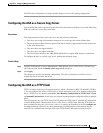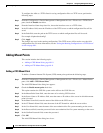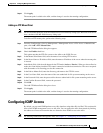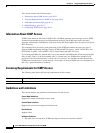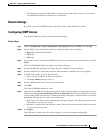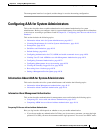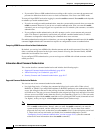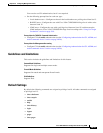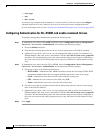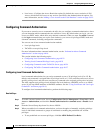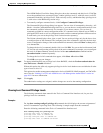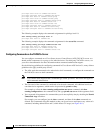
40-17
Cisco ASA 5500 Series Configuration Guide using ASDM
Chapter 40 Configuring Management Access
Configuring AAA for System Administrators
• TACACS+ server privilege levels—On the TACACS+ server, configure the commands that a user or
group can use after authenticating for CLI access. Every command that a user enters at the CLI is
validated with the TACACS+ server.
About Preserving User Credentials
When a user logs into the ASA, that user is required to provide a username and password for
authentication. The ASA retains these session credentials in case further authentication is needed later
in the session.
When the following configurations are in place, a user needs only to authenticate with the local server
for login. Subsequent serial authorization uses the saved credentials. The user is also prompted for the
privilege level 15 password. When exiting privileged mode, the user is authenticated again. User
credentials are not retained in privileged mode.
• The local server is configured to authenticate user access.
• Privilege level 15 command access is configured to require a password.
• The user account is configured for serial-only authorization (no access to console or ASDM).
• The user account is configured for privilege level 15 command access.
The following table shows how credentials are used in this case by the ASA.
Security Contexts and Command Authorization
The following are important points to consider when implementing command authorization with
multiple security contexts:
• AAA settings are discrete per context, not shared among contexts.
When configuring command authorization, you must configure each security context separately.
This configuration provides you the opportunity to enforce different command authorizations for
different security contexts.
When switching between security contexts, administrators should be aware that the commands
permitted for the username specified when they login may be different in the new context session or
that command authorization may not be configured at all in the new context. Failure to understand
that command authorizations may differ between security contexts could confuse an administrator.
This behavior is further complicated by the next point.
• New context sessions started with the changeto command always use the default enable_15
username as the administrator identity, regardless of which username was used in the previous
context session. This behavior can lead to confusion if command authorization is not configured for
the enable_15 user or if authorizations are different for the enable_15 user than for the user in the
previous context session.
Credentials required
Username and
Password
Authentication
Serial
Authorization
Privileged Mode
Command
Authorization
Privileged
Mode Exit
Authorization
UsernameYesNoNoYes
Password Yes No No Yes
Privileged Mode
Password
No No Yes No



